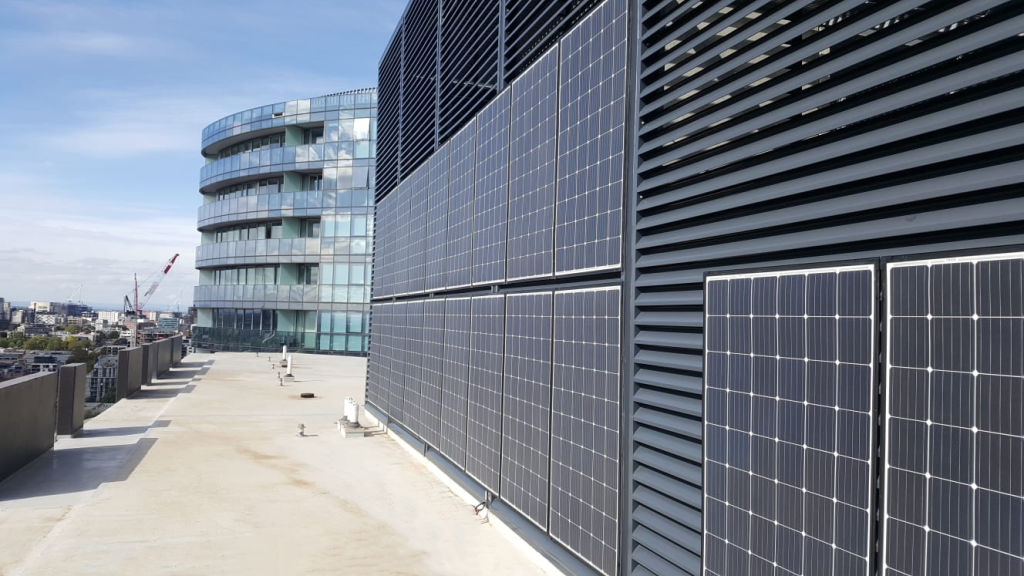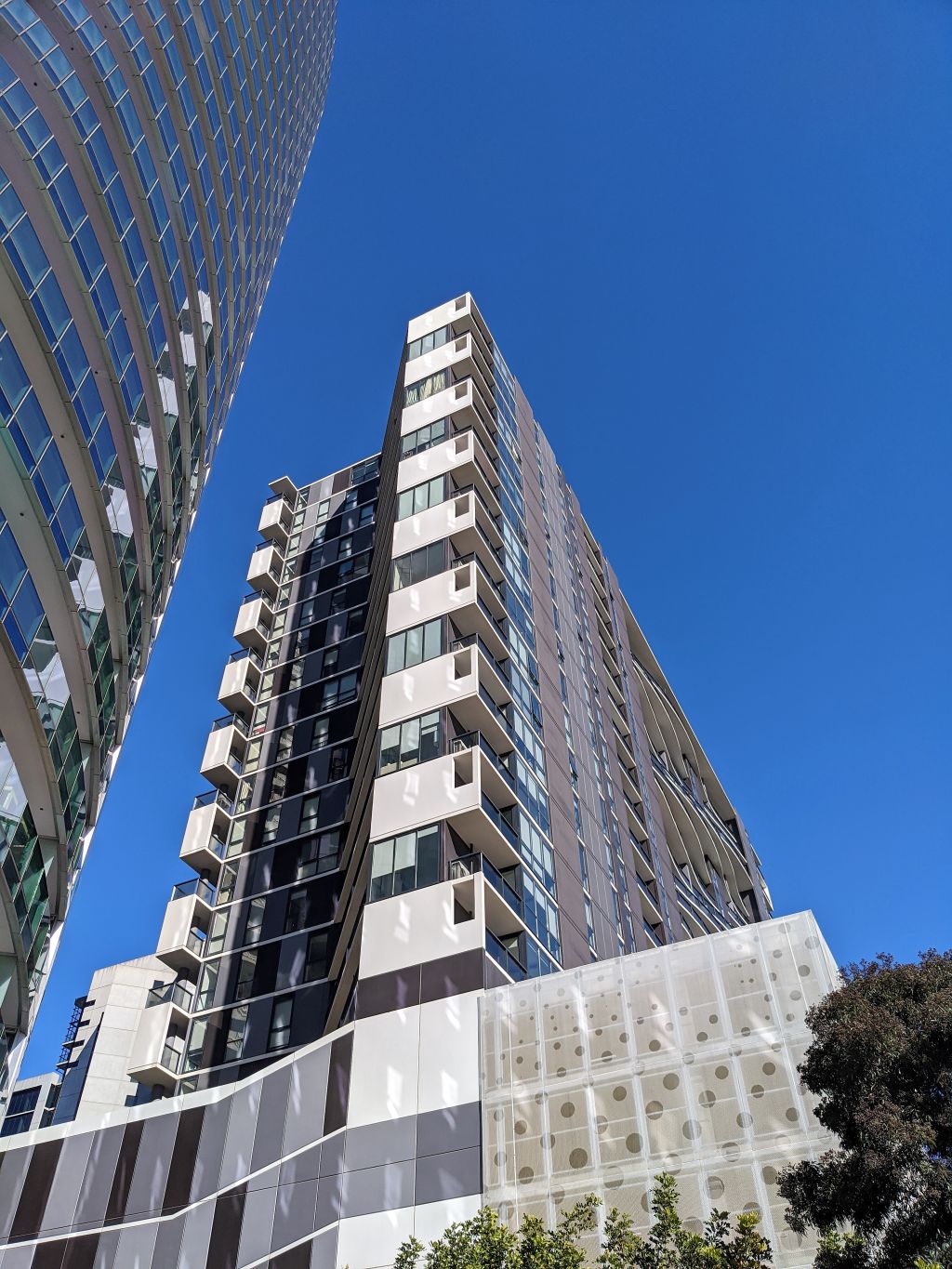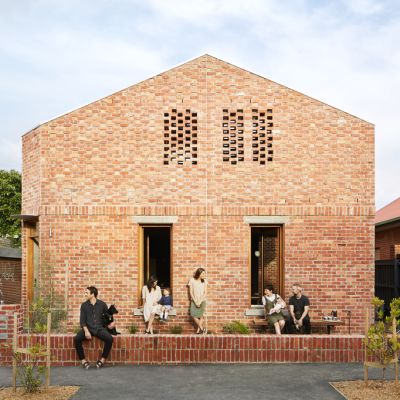Melbourne apartment building fitted with vertical solar panels an ‘Australian first’
A Melbourne apartment building has become the first in the country to be fitted with vertical solar panels, according to the company which helped to install them.
The 87 panels on Docklands’ Harbour One can produce enough electricity to power the equivalent of 11 apartments per year, save the residents $6000 every 12 months in total and also offset 27 tonnes of carbon, Winconnect says.
The company was responsible for Melbourne’s tallest solar array and often installs panels atop of apartment buildings to power common areas, alleviating the cost on owners’ corporations.

Sustainability manager Craig Ashdown said they’d been approached to add solar to the building but couldn’t find the space on the roof, so they went for a vertical installation.
“The means of the way [the panels] generate electricity is the same but the difference is they’re a third of the weight, they’re flexible and they are a little bit more inefficient,” he said.
“They’re a technology that’s been around for a couple of years now but only recently have they been accredited by the Clean Energy Council for commercial use. They’re a bit more expensive than traditional panels too so they’re not widely used.”
Mr Ashdown was hoping the Australian-first would inspire others to install vertical panels to help bring down grid energy consumption.
“What this signifies is with a little bit of creative thinking and utilising the technology of today and tomorrow, there can be a benefit of solar photovoltaic cells on a building but with just a different design mechanism,” he said.
Green Energy Markets director Tristan Edis said adding solar panels to high-density buildings was a key area of growth for renewables in Australia.

“Nationally we’re at about close to one in four detached homes that have solar panels but we’re not making very much headway in high-density housing,” he said. “It’s expected to grow as a proportion of dwellings [and] that is going to be an important area if we’re going to see growth in solar.”
The rapid decrease in the costs of photovoltaics had also opened up opportunities like vertical panels on apartment buildings, Mr Edis said.
“In the past people used to think they were precious and expensive and we don’t put them in places that aren’t aligned with the sun,” he said. “Now they’re cheap, we don’t have to get them aligned [exactly] with the sun.
“They still deliver cheap electricity relative to buying it from the grid. The issue is people need to realise that change in economics needs to lead to a change in approach.”
Difficulties with owners’ corporations in apartment buildings being stacked with investors meant it might require legislation or regulation to speed the uptake of solar on high-density buildings, Mr Edis said.
“The fundamental problem we’ve got is when people tend to purchase apartments they’re often bought by investors and they don’t give a shit about renters’ electricity bills, they just want the cheapest property,” he said. “The economics make logical sense but you then have these principal-agent problems.”
We recommend
We thought you might like
States
Capital Cities
Capital Cities - Rentals
Popular Areas
Allhomes
More










